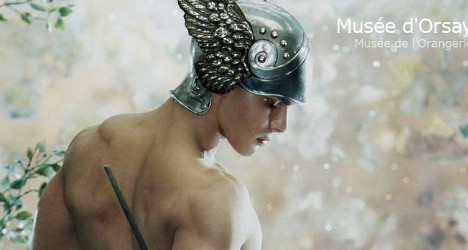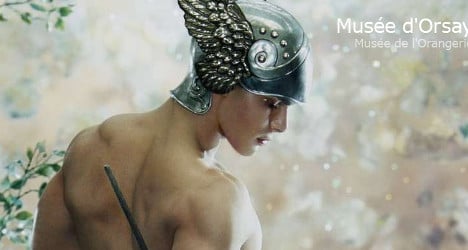The glory of the male form is the focus of Paris's Musee d'Orsay programme this autumn, with hundreds of naked men waiting to adorn its illustrious walls: all in the name of art, of course.
The "Masculin/Masculin" exhibition will exhibit 200 works about male nudes from as far back as 1800, and the art crowd in the French capital is already buzzing about the "out of favour" male physique finally going on show in one of the world's greatest museums.
For Guy Cogeval, the Orsay's president, the subject was overdue for some real exposure. "I've wanted to explore this theme for a long time, since I was director of the Musee des Beaux-Arts in Montreal 15 years ago. I suggested doing it but it was explained to me that it would be frowned upon," he said.

(Screengrab from www.Musée-orsay.fr)
Cogeval said he had "already received quite a few calls to find out what it was all about," as he put the finishing touches to the exhibition before doors open on September 24.
Inspired by Vienna's Leopold Museum, which held a male nudes exhibition in autumn 2012, Cogeval was keen to emphasise that just 20 of the same works would be put on display in his own.
But the Orsay programme will include one artwork that did not go down well in Vienna, even though it was only used to advertise the event: French duo Pierre & Gilles' "Vive La France" from 2006, which depicts three football players with their manhoods proudly displayed.
The advert caused such consternation in the Austrian capital that the offending areas had to be covered by a red rectangle.
SEE ALSO: Musee d'Orsay 'kicks out family for smelling bad'
The museum has opted for a more demure work by Pierre & Gilles as one of the adverts to highlight the current exhibition on the Paris metro, a portrait of the Greek god Mercury, portrayed from behind, wearing only a helmet.
"Masculin/Masculin" will feature painting, sculpture, and "a lot of photography", Cogeval said, as "one of our themes is the homoerotic, which is a thread throughout the exhibition".
"The first big artists who were openly gay were generally photographers," he explained, citing 19th century gay pioneers Baron Wilhelm von Gloeden, a German who worked mainly in Italy, and the American Fred Holland Day.
The male nude, Cogeval believes, is "no longer possible to ignore", and the Orsay programme features many staunchly heterosexual artists such as Angel Zarraga, Paul Flandrin, Jacques-Louis David and Anne Louis Girodet celebrating men at their most natural.
"It's male beauty in all its glory," he said.
The museum's director is open about the possibility for controversy, and laughs as he says he "hopes" conservative family-values groups stage protests against the exhibit.
"We hadn't thought about it but there could be some reaction," he said.
"Among those groups that protested gay marriage and who we saw really overdoing it on the streets, there will probably be people who aren't very happy that we're doing an exhibition like this."
The autumn programme was planned far in advance of the angry protests that stole headlines in France earlier this year, and "Masculin/Masculin" is intended to make people think, "to amuse them and to surprise them", and not to push an agenda, Cogeval said. "It's not political."



 Please whitelist us to continue reading.
Please whitelist us to continue reading.
Member comments